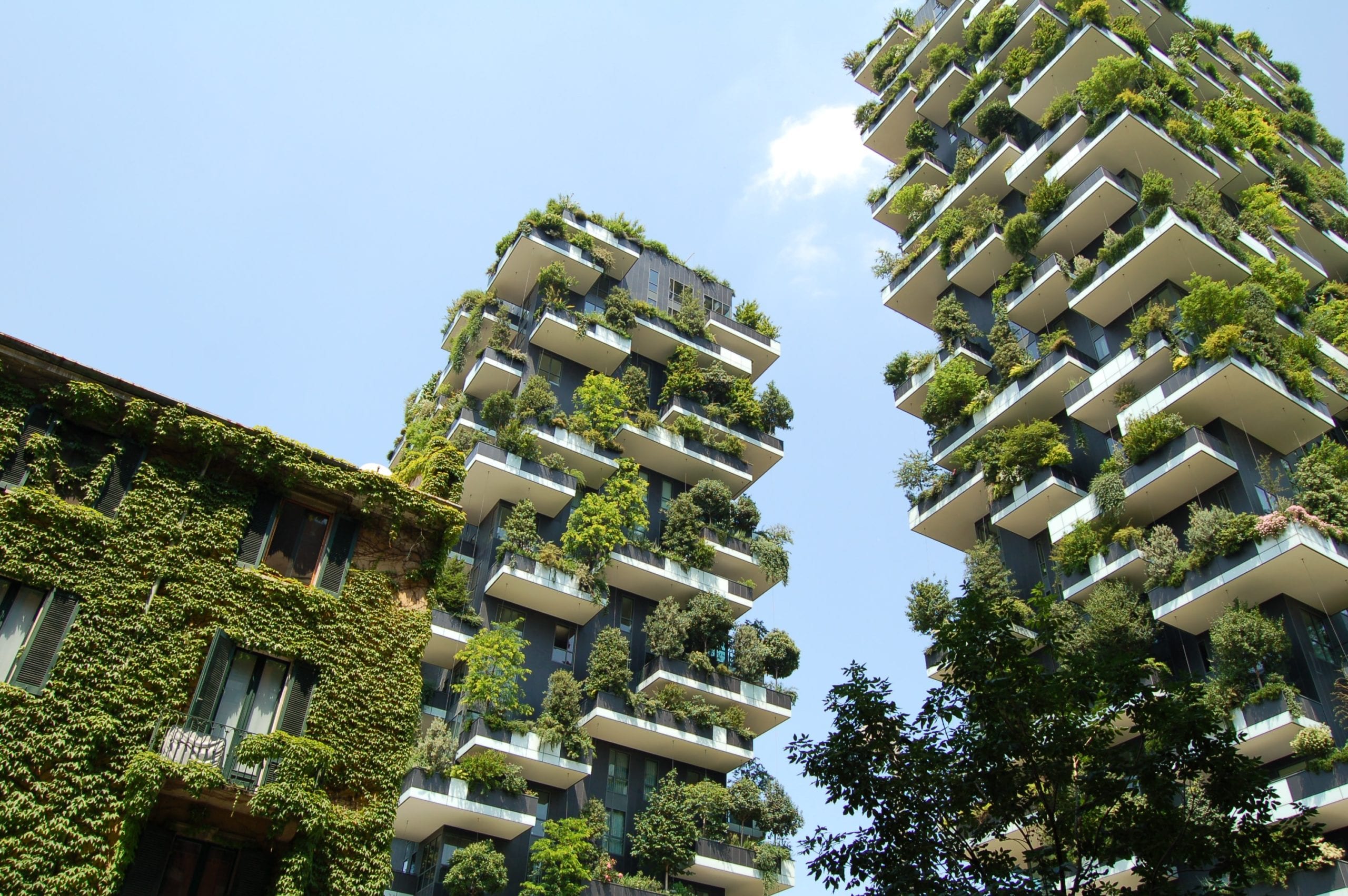Sustainable Living & Organizational Design with Clara Sharma
Clara Sharma is a French interior designer and sustainability expert based in New York City. Specialized in sustainable living and organizational design, she has dedicated her career and personal life to Human Rights and the environment for the last couple of years. After turning for a more minimalistic and sustainable lifestyle, she now raises awareness around consumerism through her work as an interior designer and is a proud advocate of minimalism in every way.
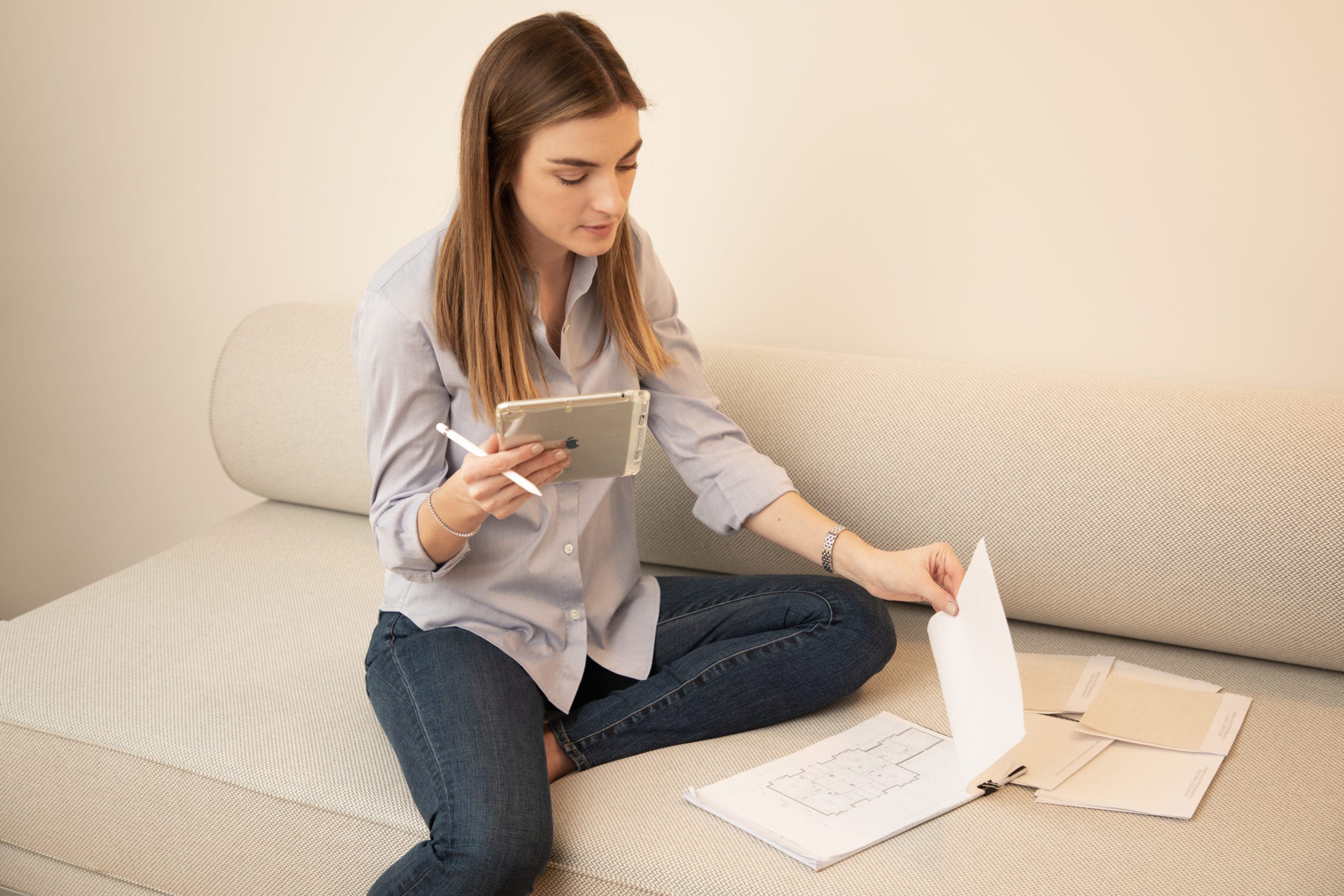
© Alice Prenat – Portrait Madame
Quite impressed by her path and her commitment, we had a chance to have a very interesting chat with Clara Sharma to understand more where it all comes from. Her background as a lawyer might explain her strong will to make things change for the best and to help people grow and expand in their life. Indeed, after studying International Law and Human Rights in France, she pursued her career in NYC and completed a Masters in Human Rights at Fordham University, School of Law, with a major in CSR. She focused her work in the fashion industry. Fond of fashion herself she quickly realized how devastating for the environment and Human Rights this industry is. This was the first trigger and from that she decided to change her habits and educate others through Iconable, her first company founded in 2017 and dedicated to sustainable fashion. The passion around this kind of topic kept growing and Clara realized that she could actually serve a greater purpose, and decided to expand her mission beyond fashion. Over-consumption in general and waste are a real problem and impact the majority of industries. She thus took a step back and reflected on how she could educate people on these issues and teach them means to have a positive impact on our planet and upgrade their life by buying less. Her innate talent for creating peaceful and elegant interior design combining unique fabrics and timeless creations led her to transform one of her friend’s interior keeping in mind her motto “Living better with less”. That was the start of Clara Sharma’s interior design studio that she founded in 2019.
“When you simplify your life, you elevate it.”
For Clara Sharma it is all a matter of 3 main steps towards a clean and sustainable space: de-cluttering, organization and minimalism. People are very receptive, her agenda for the next couple of months is full with interior projects and she is regularly invited to speak at conferences and to offer insights at a growing base of consumers willing to make a change. She is indeed dedicated to the educational aspect of her job; “Consumers are the key to change, they have the power to determine the future of sustainable development”. Although she acknowledges how difficult it can be sometimes for consumers to distinguish between green washing, hidden scandals and true sustainable initiatives, she advises them to adopt a minimalistic lifestyle and reduce their consumption as a solution. The key is to focus on the quality of the purchases by buying lasting second-hand pieces, timeless creations, artisans’products etc., and get rid of the unnecessary amount of goods you own to simplify your space. “ Everything in its place and a place for everything”. Once this message is understood by her clients, Clara Sharma fades in the background and let her customers grow and develop with this new mindset. She insists they often become the best advocates of this cause and always pass on the message around them.
“Consumers are the key to change, they have the power to determine the future of sustainable development”
Driven by minimalist interiors and clear spaces Clara draws inspirations from French designers such as Pierre Paulin or Joseph Dirand. Her curious spirit absorbs countless of color palettes, textures and shapes that she encounters through her travels.
Share
Architecture, Interior Design & Sustainability
The definition of Architecture is the Art of designing and constructing buildings and the one of interior design is the art or process of designing the interior decoration of a room or building. Both modify their environment by transforming or creating space. They aim to improve the quality of life of people in their environment.
Considering their definition, it would be logic that interior design and architecture take into account their environment and include sustainability in their core. And it’s more and more the case!
But first let’s be precise that this article doesn’t aim at telling design professionals to move to sustainable projects only but is more some food for thought, some examples of sustainable architectures or interiors, some principles of sustainability.
Sustainability can be achieved through different ways starting by selecting eco-friendly products or materials. Green architecture is a way to reach sustainability.
For example using trees as a design element is something more and more common as they provide shade, boost air quality, and reduce air-conditioning
Let’s take a closer look to the Oasia Hotel Downtown in Singapour.
The external facade is covered by natural vine. Its four sky terraces comprise 1,793 large planter boxes, and four large structural cores that allow for good cross ventilation reducing the overall energy cost. The hotel, which was designed by the firm WOHA, hosts 33 species of plants!
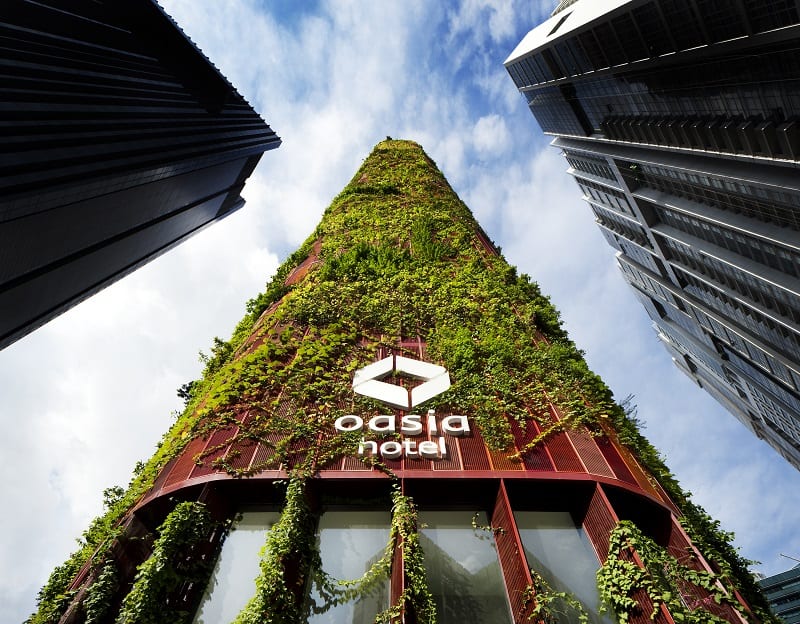
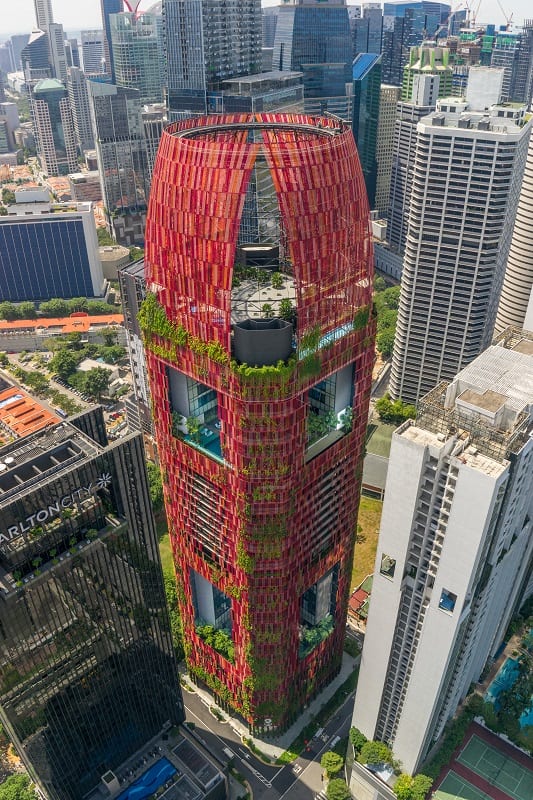
Another example of green building is the Crystal built by Siemens in London which uses natural light as electricity is mainly powered by photovoltaic solar panels. Moreover the Crystal is illuminated by an integration of LED which is switched on and off depending on the amount of daylight.
Finally, the building’s roof acts as a collector of rainwater which can be converted as drinking water.
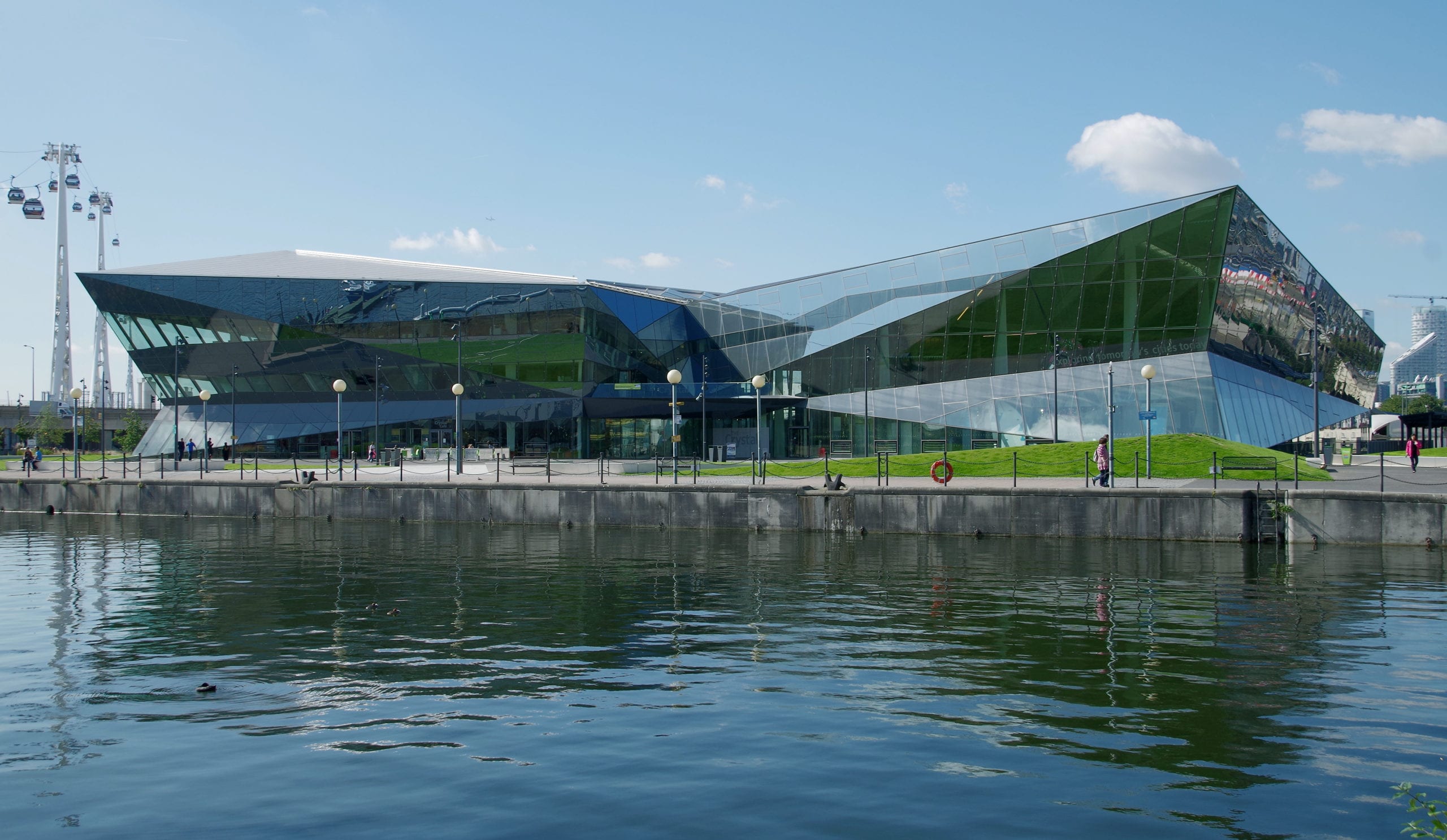
This goal of green architecture has also been materialized over the past few years by the creation of the LEED certification, a rating system that builders, developers, and architects can adhere to. This certification takes into account location and transportation, water inefficiency, energy performance, the materials and resources etc.
Another recognized standard is the Passive House. Originated in Germany in the mid 1990s, Passivhaus, Passive House buildings generally cut energy consumption by 60-70 percent while LEED certified buildings typically use 25-30 percent less energy. Rather than rely on solar panels or wind turbines, Passive House is a building standard focused on the development of properties that use less energy from the start. Passive House is also more accessible as less costly.
Another example of green design which can be seen a bit more “extreme” is the work of Earthship Biotecture which is specialized in self-sustaining homes. Founded by Michael Reynolds, the origin of the project lies in the “thumb house”, a desert dwelling built out of 70,000 discarded beer and soda.
To date, Earthship Biotecture has created around 1,000 energy-efficient houses in more than 40 countries around the globe, ranging from luxury rentals to disaster shelters. Each building generates its own electricity, processes its own sewage, collects rainwater, and maintains temperature without any additional fuel.
His most recent and impressive work is the Villa Bonuco. After a terrible Hurricane in Puerto Rico in 2018, the firm and more than 200 locals gathered approximately $80,000 worth of raw materials and a whole lot of tires into what consist of five Earthship structures centered around a garden.
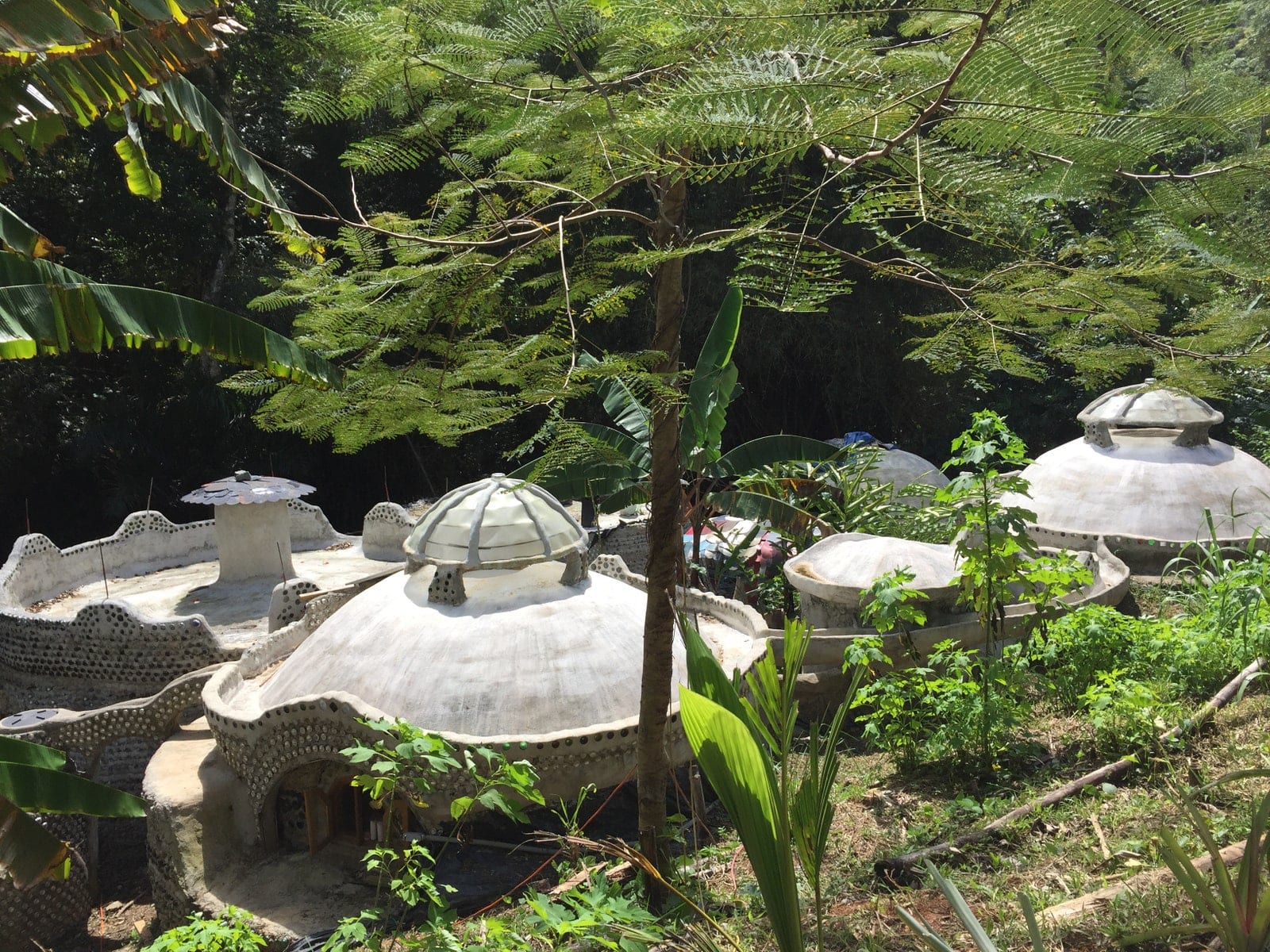
But sustainability is not only about ecology it’s also about social and economic practices.
In this era of mass production & consumption leading to a quantity of waste, people are more and more valuing what they have. This lead us to interior design and craftsmanship.
Unique products or products made in a limited quantity, handmade and with a story that is something that participates to achieving sustainability.
Obviously hand-crafted products are more expensive than mass-produced uniformed ones but despite economic challenges, consumers are more and more willing to pay a premium for creatively crafted products.
Therefore, homes can be responsibly furnished and decorated with carefully-crafted pieces. Why ? because it lasts longer, because their creation imply fewer waste materials as more has been put into the design and creation thinking.


